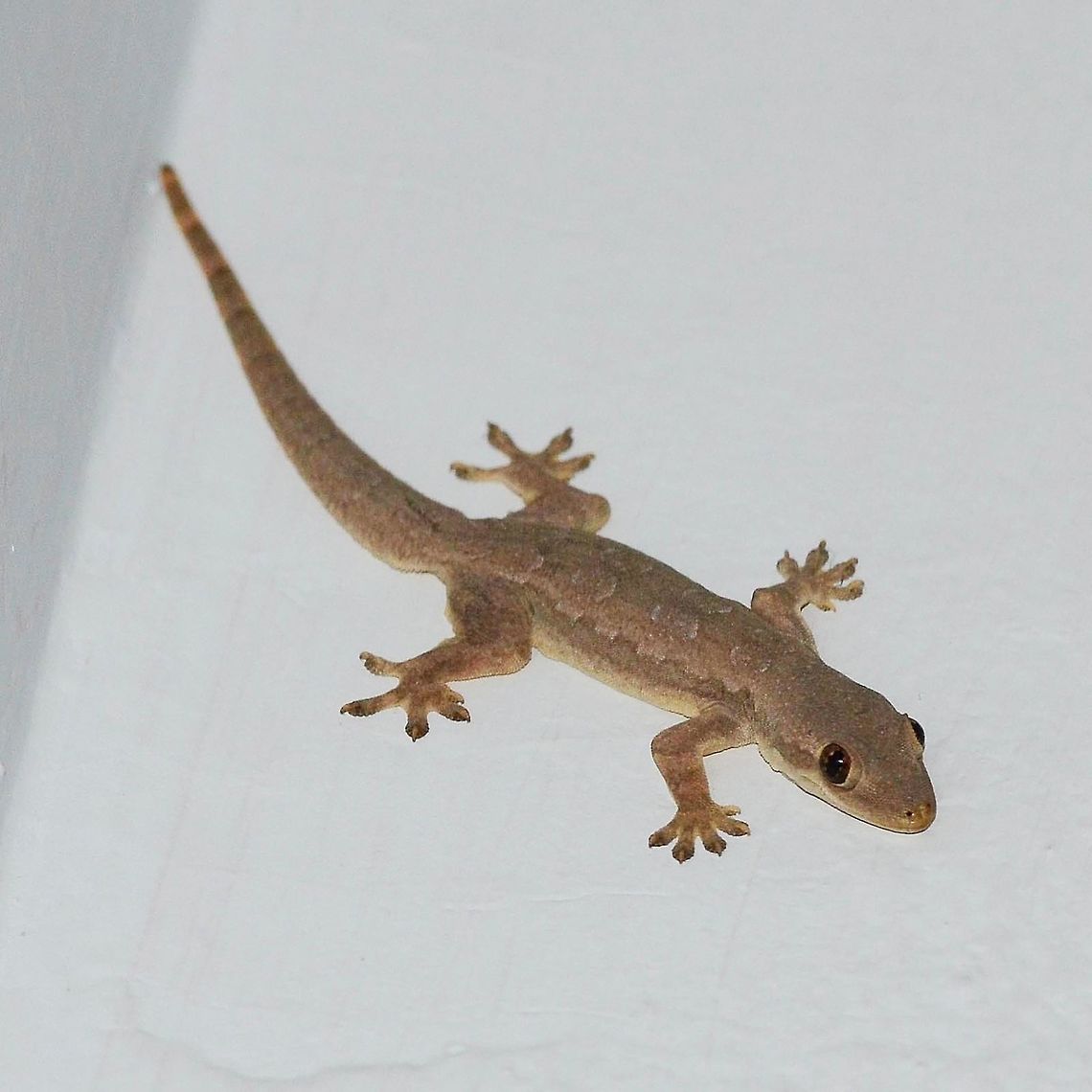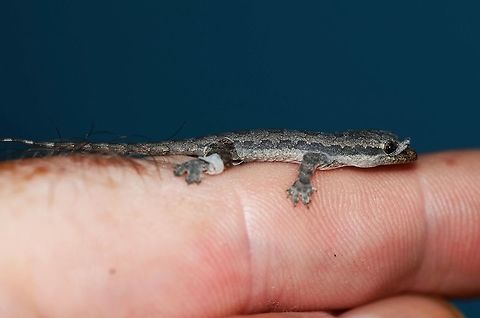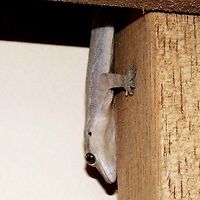
Hemidactylus garnotii - Indo pacific gecko
You know you are in Indonesia when you look around the walls of the room and see a few of these. I can see two as I am typing this. The benefits of allowing these critters to patrol your walls far outweigh any inconvenience.
Advantages – they consume anything that moves, from the smallest midge to the largest roach.
Disadvantages – they defecate. Do not sleep with your head up to the wall, move away a foot or so. Cover dishes left to dry. Cover any drinks that you leave standing. Generally, figure out where the droppings are going to fall and take appropriate action.
Known locally as chikchaks, due to the chirping noise that they make, usually in the dead of night.
Very difficult to approach. They scamper off in a hurry if you get within six feet.
Amazing to watch on the hunt.
Location is Bandung, West Java, Indonesia. In house.

''Hemidactylus garnotii'', commonly known as the Indo-Pacific gecko, Garnot's house gecko or the fox gecko, is a species of gecko found in India, the Philippines, Southeast Asia, Australia, and throughout Polynesia. Adults are about 4 to 5 in in total length . They are seen as dark gray or brown with light markings in daylight and a pale, translucent colour at night. The belly is orange or yellow. The head has a long, narrow snout, hence the name fox gecko. The flattened tail has a row of spiny.. more


comments (4)
Like when I threw a ball of paper in the rubbish bin, and a gecko jumped out. Nearly had a heart attack.
Another time I was spread out on the sofa, naked in the heat. A gecko fell from the ceiling, onto my belly. Total panic!
Another time, I felt something climbing my leg, no idea what it was, but I knew not to panic. I slowly rolled back on the computer chair and there was a gecko looking up at me. Relieved, I rolled back, leaving him on my leg. No point us both panicking :)
Dave Posted 9 years ago, modified 9 years ago
Dave Posted 9 years ago